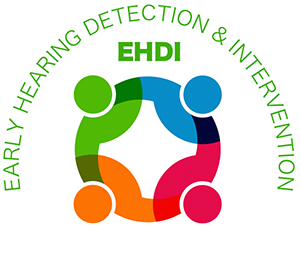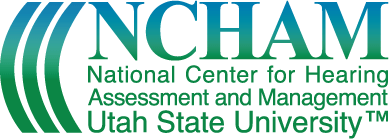Language Underperformance in Young Children 0-6 Years of Age Who Are Deaf or Hard of Hearing: Are the Expectations Too Low?
Presented by: Dr. Susan Wiley, Dr. Jareen Meinzen-Derr
When: June 26th, 2017 | 11:00 am–12:00 pm Mountain Standard Time
Where: Adobe Connect
Purpose
Despite early intervention efforts, language for many children who are deaf or hard of hearing (DHH) continue to remain average.
Objectives
Examine language performance in the context of cognitive abilities; Identify factors associated with language underperformance (LU).
Methods
Children with bilateral HL, age 0-6 years enrolled in prospective cohort study of development. Standardized assessments included language, cognition, behavioral measures. NVIQ was categorized: <80, 80-100, >100. Language reported as standard scores and as ratios of receptive language to nonverbal IQ (NVIQ). Low language was defined as receptive standard score <80; LU as ratio <85. Multiple logistic regression used to identify factors associated with LU (significant odds ratios (OR) reported). Results: 151 children enrolled, median age of HL diagnosis 4 months, half with mild-moderate HL, 35.8% use cochlear implant. Adjusted mean language scores increased with increasing NVIQ categories (70.4, 80, 92.8 respectively, p<.0001). Adjusted mean ratios decreased with increasing NVIQ categories (102.3, 88.5, 83.3, p<.0001) indicating widening language gaps. Only 29% of NVIQ<80 had LU, though most had receptive scores <80; whereas 41% of NVIQ>100 had LU. Children were more likely to have LU: NVIQ>100 (OR 6.4), lowest SES index (OR 6.5), nonwhite (OR 3.1), used an implant (OR 3.7). Amplification, identification age were not significant.
Conclusion:
Children with lowest NVIQ had significantly higher ratios (though lowest language scores) than other NVIQ categories. Children with highest NVIQ were at highest risk for LU. Standard scores do not always convey a language “gap” which can have a negative impact on other developmental domains.
Learning Objectives:
- Recognize the importance of understanding a child's non-verbal cognitive levels to build appropriate language goals
- Identify factors associated with language underperformance in children who are d/hh
- Recognize implications of language underperformance on other developmental domains
Presenters:
Susan Wiley, Cincinnati Children's Hospital Medical Center
Dr. Susan Wiley is a developmental pediatrician with expertise in children who are deaf/hard of hearing. She has many years of experience serving children with multiple disabilities.
Jareen Meinzen-Derr, Cincinnati Children's Hospital Medical Center
Dr. Meinzen-Derr is quantitative epidemiologist at the Cincinnati Children's Hospital Medical Center. She has focused her research on outcomes of children who are deaf or hard of hearing, and specifically those who have additional developmental disabilities.


